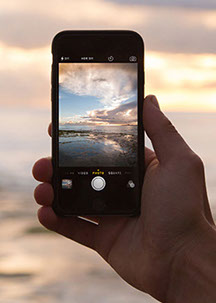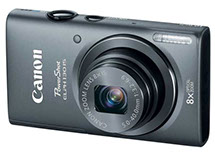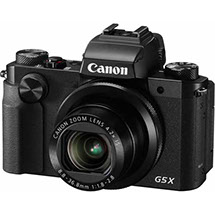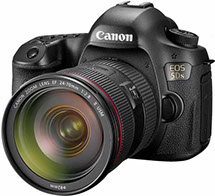
The world of captured lights




April 2018
I was at a dinner party a few months ago and there was this guy who was telling anyone who cared to listen that no-one needed a real camera these days ... all you needed was a smartphone, they did everything a camera can do and the quality is just as good.
Oh dear, so sadly uninformed. But happily after some discussion he understood the error of his ways ... and agreed "get a camera" if you want to take REAL PHOTOGRAPHS!
For lots of people the camera in a good quality smart phone is all they'll ever need. All they ever do is family snaps or simple holiday snaps so never need some of the technology cameras have that phones don't and they never print their photographs and only show them to other people on their phone or tablet ... or perhaps their computer. So for most situations what their phone will capture and present is more than enough.
BUT, and it is a BIG BUT, more and more people are discovering photography by using their smartphone and are looking for more capability and better quality than their phone offers ... and so are going out and buying a "real camera". You know interest in photography is at an all time high. Manufacturers like Canon and Nikon are producing more different models of cameras than they have ever done before and are selling more of them than ever before.
And then once they get the big for photography they're buying more advanced cameras, moving up the seemingly almost never ending ladder of cameras from basic "point and clicks" right the way up to super sophisticated, mega high resolution "medium format" beasts.
Why? It's probably down to just FOUR things ... when you take away all the BS so many people go on about.
Well the first thing keen photographers are looking for is a device that offers more options, more features when taking their photographs than a phone affords them. Even the most basic of cameras today (such as the Canon Power Shot range) allow the photographer a lot more control over how they capture their images. They want to be able to select file type (JPG or RAW), they might want to bracket their shots, they might want to control the flash and so on. Cameras offer a lot more options and choice than smartphones do.
Next it's the lens. The lens on a smartphone is pretty basic, just two or three pieces of glass (or even plastic), just doesn't offer you the sharpness and clarity a real camera lens does. So if you;re using a smartphone no matter how many mega-pixels the sensor is, if the light has gone through a poor quality lens, then it will only capture a poor quality image. Whereas cameras made by reputable and experience camera manufacturers such as Canon and Nikon have much better quality lenses, comprising of many elements made from high quality optical glass. And smartphones only have digital zoom on them ... if you;re looking for good quality images from a zoom lens it MUST have optical zoom ... a zoom using the glass to get closer, not just enlarging the pixels.
OK, so now the light has gone through the lens and landed on the sensor. What happens next? The PROCESSOR basically does some fancy things with it and coverts it to a digital image that is saved your your card. And because a phone is a "multi function device" the processor in it isn't dedicated to working with images, so it isn't as effective at processing and saving photographic images as the processor in a dedicated camera - where all the processor works with is images. Result? What's saved to your card in a phone isn't the same high quality as is saved to the card of a dedicated camera.
And finally there are ACCESSORIES. With a phone all you can do is use the phone, no photographic accessories are available to help you .... and expand your capability. And yes that's the case with the simplest point and click cameras. But once you get beyond that the scope of accessories available is amazing. Even with my little Canon GX5 I can add external flash, which I can take off the camera and trigger remotely. And once you get into even the most basic of Canon, Nikon etc DSLR's the range of accessories is HUGE! Flash, remote shutter trigger, vast range of lenses, external screens to view what you;re photographing, second batteries, filters for your lenses and much, much more. All designed to make taking great photographs so much easier and producing much higher quality results.
In summary? For many people their smartphone will certainly be enough for much of their photographic needs, but once anyone starts thinking about "real photography" and wanting to be that bit more adventurous and produce higher quality work, then the only way to do is with "real cameras". And that's where a long journey can begin ... from entry level, enthusiast level DSLR all the way up to the super advanced medium format cameras like the Phase One XF 100MP. And there's lots of options on the way - just have a look at the string of cameras shown on the right!
Over to you. It's your choice ... but I know where I've gone





